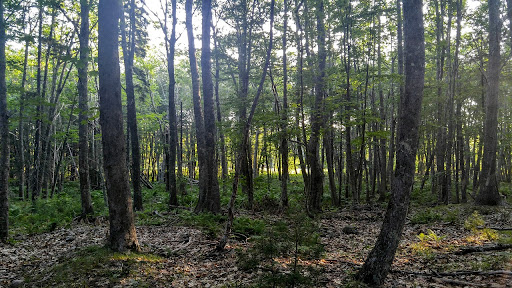Maine is renowned for its lush forests and abundant wildlife. It’s no surprise, then, that forestry is an important part of the state’s economy. For landowners, understanding the ins and outs of Maine forestry is essential for taking advantage of the many opportunities that it presents. From initial timber appraisals to forest management plans, a lot goes into effective forestry in Maine. In this guide, we’ll discuss the basics of Maine forestry, the benefits of sustainable forestry, and the resources available to Maine landowners.
Introduction to Maine Forestry
Maine is home to over 17 million acres of forestland, making it one of the most heavily forested states in the country. The state’s forestry industry is also one of its largest, employing thousands of people and contributing billions of dollars to the economy. Maine’s forests are diverse and have a variety of uses, ranging from timber production to recreation and wildlife habitat.
The Maine Department of Agriculture, Conservation, and Forestry oversees the state’s forestry industry. The department offers a variety of services to help landowners manage their forests, including conservation programs, forest health initiatives, and more.
What Is Profitable Forestry?
Profitable forestry is the practice of sustainably managing a forest to maximize the economic value of its resources. This includes harvesting timber for sale and using other practices, such as selective thinning, to improve forest health and increase the productivity of the land. Profitable forestry practices can help landowners generate income from their land while also preserving its ecological value. Most of the time, this is effectively passive income since following the forest management plan from a landowner’s perspective is mainly a matter of letting professionals do their jobs and enjoying the revenue less the cost of the work of those professionals.
When it comes to managing forests for profit, it’s important to understand the basics of Maine timber. Maine is home to several different species of trees, each of which has its own unique characteristics. Understanding the different types of trees and their value can help landowners determine which species to harvest and which ones to leave standing. There are also many considerations when it comes to maximizing timber quality and quantity.
Understanding Maine Timber
Maine’s forests are home to several different species of trees, including red oak, white pine, and hemlock. Each species has its own unique characteristics that can affect its value. For example, red oak is a hardwood species that is highly valued for its strength and durability, while white pine is a softwood species that is often used for lumber and construction, especially for finish work like trim, v-notch paneling, wainscoting, and so on. Hemlock is also a softwood species and is often used for paper production and dimensional lumber.
It’s important to understand the characteristics of each species in order to determine which ones are best suited for harvesting. For example, red oak is usually harvested for its hardwood and is often used for furniture and flooring. White pine is often used for finishing work on construction projects, while hemlock is often used for paper production and dimensional lumber.
The Benefits of Forestry in Maine
Forests are more than just sources of timber; they also provide a variety of other benefits. Forests play an important role in maintaining healthy ecosystems, providing habitats for wildlife, and protecting water resources. They also offer recreational opportunities, such as hiking, hunting, and camping.
In addition, sustainable forestry practices can help landowners improve their land’s productivity and increase its value. By sustaining a healthy forest, landowners can generate income from their land while also protecting its ecological value.
Benefits to Maine Wildlife
Maine Forestry plays a crucial role in promoting biodiversity by actively managing and conserving the state’s diverse forest ecosystems. Through sustainable forestry practices, it ensures the preservation of wildlife habitat, which is essential for maintaining a rich variety of plant and animal species. Initiatives such as selective logging and reforestation help create a mosaic of forest ages and structures, providing a range of habitats for different species.
Many Maine Foresters collaborate with wildlife biologists, ecologists, and other stakeholders to develop comprehensive management plans that address the needs of threatened and endangered species. By prioritizing ecosystem health and habitat connectivity, Maine Forestry contributes to the long-term resilience of the state’s unique biodiversity.
The First Step for Maine Forestry: Timber Assessment
Timber assessments are essential for any landowner looking to manage their forest effectively. A timber appraisal is an objective, third-party assessment of the timber value on your woodlot. This assessment allows you to make informed decisions about your upcoming timber harvest activities. The goal of a timber appraisal is to determine the actual value of your forest, which requires an accurate inventory of your woodland, an assessment of the available resources’ quality, and market value.
Timber assessments provide essential information for landowners, including timber volumes, timber stands typing breakdown, and timber value estimation. A detailed report provided by the forester clarifies the most critical metrics and quality of timber present on your property. With this information, you can set fact-based priorities when it comes to planning and executing the harvest of your timber. A timber appraisal beforehand makes it easier to track your progress toward meeting your objectives, which means you can make the most of the resources in your forest.
In addition to providing objective information for planning and decision-making, timber assessments are valuable for tax purposes. Property taxes are based on the value of the land, and a property assessment must take place every ten years by a professional forester. Four different types of property taxes can be associated with your land, including ad valorem property tax, flat property tax, yield tax, and severance tax.
Developing a Sustainable Forestry Plan
Developing a sustainable forestry plan is essential for managing a forest in a way that is both profitable and ecologically friendly. A good forestry plan should include information about the species of trees on the property, the harvest methods that will be used, and the timber sale prices that will be offered. It should also include information about the types of management practices that will be used to ensure that the forest remains healthy.
Creating a sustainable forestry plan is a complex process, and it’s important to work with a professional to ensure that the plan is well-crafted and effective. A forestry consultant can help landowners understand the best practices for sustainable forestry and develop a plan that meets their needs.
Requirements of a Sustainable Maine Forestry Plan
There are several requirements that must be met in order to create a sustainable forestry plan. The plan must include information about the species of trees on the property, the harvest methods that will be used, and the timber sale prices that will be offered. It should also include information about the types of management practices that will be used to ensure that the forest remains healthy.
In addition, if you’re looking for cost sharing or approval of a special tax category for your woodland, the plan must be approved by the Maine Department of Agriculture, Conservation, and Forestry. The department will review the plan to make sure that it meets all of the requirements and that the landowner is taking the necessary steps to ensure that their forest is managed in a sustainable manner.
The Cost of Sustainable Forestry
Creating and implementing a sustainable forestry plan can be expensive. Landowners will have to pay for the services of a forestry consultant, as well as for the costs associated with implementing the plan. These costs can include surveys, site preparation, and more.
The cost of sustainable forestry can be not just offset but utterly eclipsed by the increased income that landowners can generate from their land. By managing their forests in a sustainable manner, landowners can maximize their profits while also protecting the ecological value of their land.
Resources for Landowners
The Maine Department of Agriculture, Conservation, and Forestry offers a variety of resources for landowners who are interested in managing their forests for profit. The department’s website contains information about sustainable forestry practices, conservation programs, and forest health initiatives. The department also offers assistance with developing forestry plans and other services.
In addition to these public resources, there are many private organizations that offer expert assistance to landowners. These organizations, Tall Pines Forest Management among them, can provide advice about sustainable forestry practices and can help landowners develop and implement forestry plans.
Best Practices for Landowners
When it comes to managing forests for profit, there are several best practices that landowners should follow. First, it’s important to understand the different species of trees on the property and their value from both economic and ecological viewpoints. This will help landowners determine which species to harvest and which ones to leave standing. Monoculture forests are usually less desirable due to their lack of resilience, even when they’re commercially more efficient, though, as is always the case, there are exceptions.
Second, it’s important to create a sustainable forestry plan that meets the Maine Department of Agriculture, Conservation, and Forestry requirements. A good plan will include information about the species of trees on the property, the harvest methods that will be used, and the timber sale prices that will be offered.
Third, it’s important to work with a professional to ensure that the plan is well-crafted and effective. A forestry consultant can help landowners understand the best practices for sustainable forestry and develop a plan that meets their needs.
Finally, it’s important to understand the costs associated with implementing a sustainable forestry plan and to make sure that the plan is cost-effective. By understanding the costs and benefits of sustainable forestry, landowners can ensure that their forests are managed in a way that will generate the most income while preserving their ecological value.
Conclusion
Maine forestry is an important part of the state’s economy, and understanding the basics of forestry is essential for taking advantage of its many opportunities. This comprehensive guide provides an overview of Maine forestry, the benefits of sustainable forestry, and the resources available to landowners. If you need help from an expert to manage your Maine timber profitably, contact Tall Pines Forest Management today for the best Maine forestry services.


0 Comments